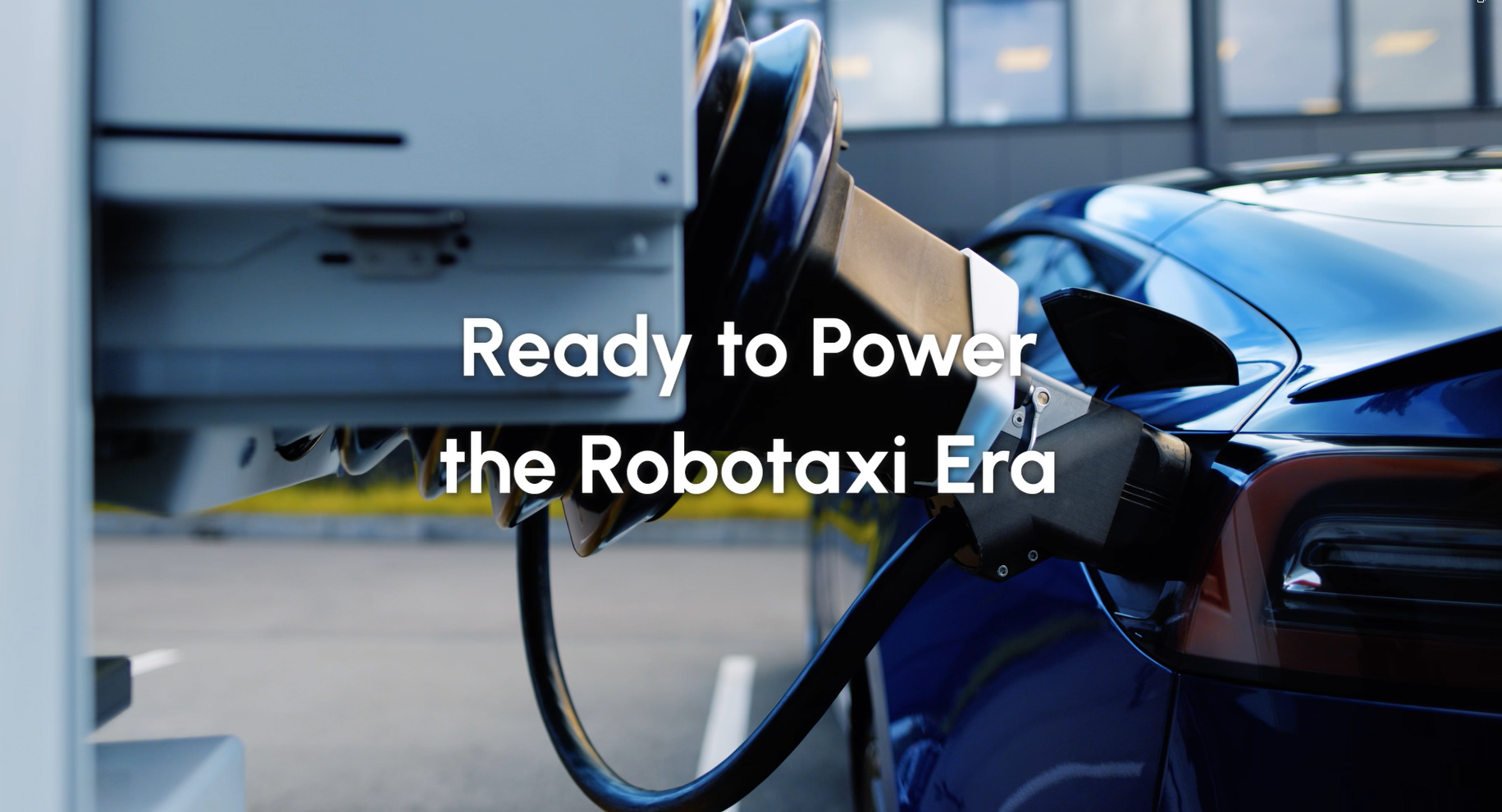The Robotaxi Rollout #4: A Smarter Smart Grid

The Robotaxi Rollout #4: A Smarter Smart Grid
With new autonomous driving vehicle services rolling out around the world, robotaxis are seen as the pinnacle of autonomous mobility and serve as an inspiring example of where the future of transportation could be headed. And while the focus on this cutting-edge technology has been on the vehicles, the user experience, and the roller-coaster path to maturity, there’s a speedbump in the road that not everyone is seeing: how do fleets of driver-less vehicles charge and service themselves?
Crijn Bouman, CEO and Co-founder
The previous blog explored the advantages of scaling a robotaxi fleet using smaller charging hubs (aka “microhubs”) in addition to larger central hubs. In our final blog post, we’ll talk about a benefit that’s not quite so obvious: how robotaxi fleets with hands-free charging microhubs can create a more intelligent smart grid. It is not an obvious benefit at first, but the enormous drive for asset optimization in a robotaxi fleet will take it there automatically. Let me explain:
It’s all about asset optimization
For a robotaxi to be competitive with human driven alternatives like regular ride hail services like Lyft, Uber, traditional taxi companies and other competing robotaxi operators, the assets must be utilized at maximum rate. In this competitive market, the cost of operation must be minimized, and revenue from operation must be optimized. It is fundamentally about the cost in dollars per mile travelled with a passenger on board. On the operational side, cost for operation can be minimized by increasing the availability of the vehicle through automating charging at hubs, building a decentralized automated infrastructure with low transit time to and from the hubs, and the possibility to immediately dispatch a vehicle when a ride is available. This is useful in high demand times such as rush hour, but there are also lower-demand hours where potentially a part of the full fleet is not required.
Since a parked robotaxi is not out earning money, there will be a big drive to find activities in the down hours that can either generate revenue, or use the time wisely for an activity that is needed anyway, such as charging. This drive for asset optimization is where smart use of the electricity grid could come into play.
Fleet Management Meets Grid Management
Let’s assume we built a robotaxi infrastructure for a large American city consisting of:
- Five big hubs, with 40+ charging stalls served by robotic charging
- 50 small hubs, distributed across the city
- A central management system coordinating both vehicles and the charging process
This creates a potential mobile smart grid, creating both an energy and ride hail arbitrage service.
A Mobile Grid
From an energy perspective a robotaxi is basically a battery on wheels. A mobile power unit that can be requested to go to any location, with the robotic charging stations serving as connection points to the power grid that can be used to connect these moving batteries to the grid at a desired location automatically.
Hands-free, robotic charging allows a charging vehicle to be dispatched with minimal or no latency, or to connect a vehicle to the grid upon request remotely. Compare this with a charging hub still using manual charging: at a manually charged hub, a human operator will receive a notification that a vehicle needs to be connected or disconnected, but in many cases the operator may not be able to get to that vehicle right away. They might be doing some other task, might be on the other side of the yard, might be on a break, or just might not be paying attention – all creating significant latency.
With a hands-free charging process, a vehicle plugged into a charger can be immediately dispatched or connected to the grid upon request, allowing for new possibilities in the kinds of services you could build.
This concept may be used to develop advanced smart grid scenarios like charging when rates are low, or when ride hail demand is low. One could also think of shifting loads to other areas to take pressure off the grid in certain times or locations, or offering a battery buffer at certain points in the grid. This creates a physical dimension to the smart grid concept: a controllable, mobile smart grid.
You could also develop lucrative arbitrage between robotaxi ride hail services, charging and offering grid services. A robotaxi could be charging when prices are low, immediately be dispatched to pick up a longer, lucrative fare, and after completing the ride decide to pick up another fare or automatically connect to the grid again at a location where prices are lower or grid services are desired. A financial optimization algorithm could further optimize the revenue and profits made by the integral robotaxi-mobile-smart-grid service system.
The Road Ahead
Robotaxis are the pinnacle of autonomous mobility, which will transform how people and goods move through our world. However, charging presents a major bottleneck, as manual charging at scale does not make business sense for a robotaxi operation. Automating the charging process with robotics offers a solution for large charging hubs and enables very attractive business optimizations such as faster scaling, micro-hubs, or upgrading existing EV charging hubs to robotaxi-ready sites. An automated charging ecosystem with robotaxis is basically a mobile smart grid, potentially unlocking highly valuable services to customer, fleet operators, utilities and the city.
The future of transportation is truly inspiring, as new innovations in autonomous driving technology offer the promise of new possibilities within the industry and beyond. And creating an all-encompassing transportation ecosystem – both on and off the road - will help pave the way for that future.

